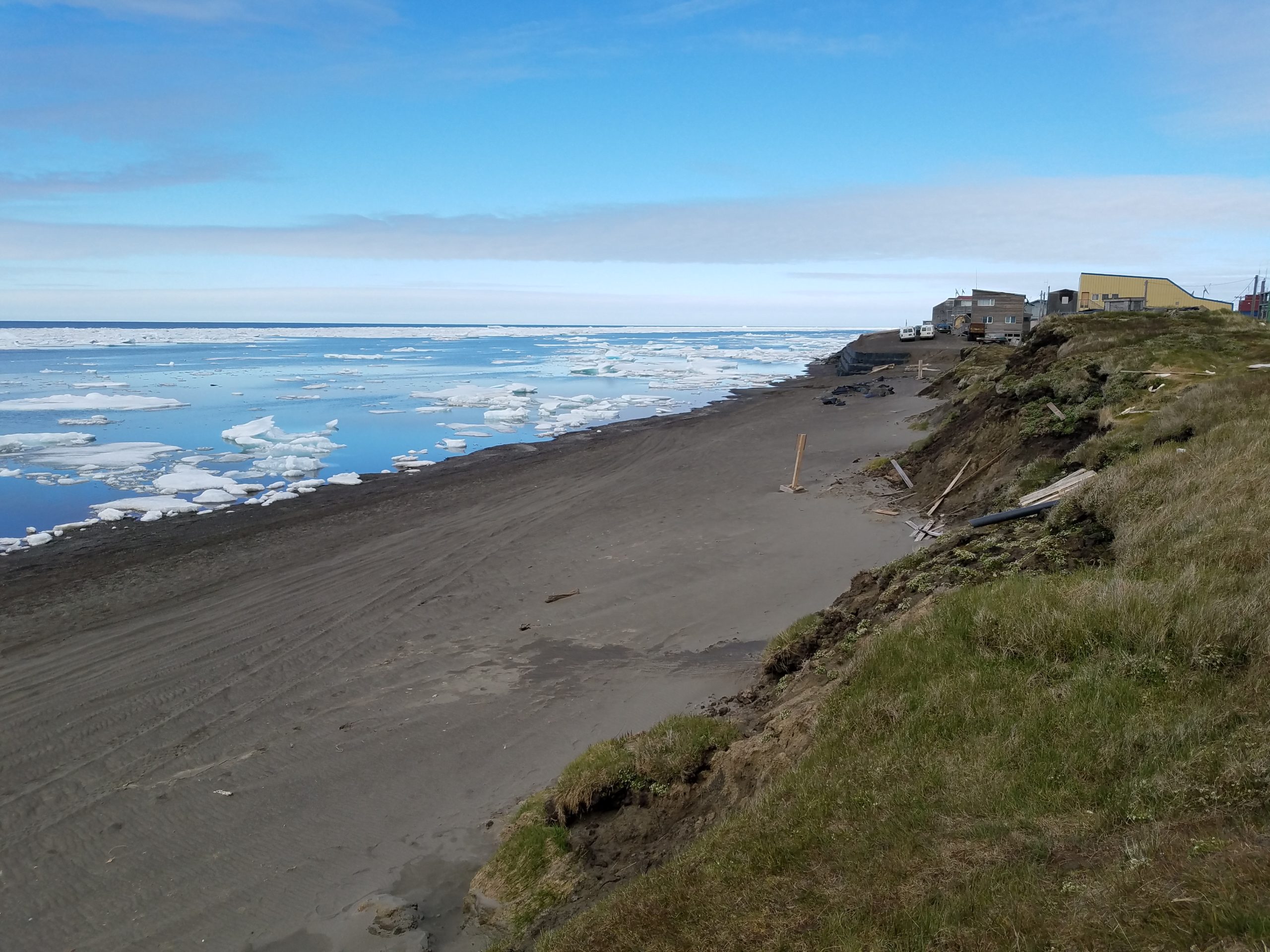A new program aims to monitor, mitigate and adapt to Arctic-wide thaw
The $41 million Permafrost Pathways program is an ambitious effort to better understand and adapt to one of the Arctic's biggest threats.

In some Alaska Native villages, land collapses caused by combined permafrost thaw, open waters. Flooding, storm surges and erosion are so catastrophic that they now go by a single Yup’ik word: Usteq.
Now there is a broad-ranging program to better understand, respond to and potentially avoid more usteq.
The Woodwell Climate Research Center and the Harvard Kennedy School’s Arctic Initiative this week unveiled their multi-year Permafrost Pathways program. The $41 million program, with funding from the collaborative Audacious Project, will combine global permafrost-thaw monitoring with regional and local initiatives to adapt to the onset of usteq and related challenges.
Permafrost in the Northern Hemisphere holds double the amount of carbon that is in the atmosphere, and thaw threatens to create a “big perturbation in the climate system” by releasing that gas, said John Holdren, co-director of the Arctic Initiative.
That means thaw is a crisis that goes well beyond the Arctic, Holdren said. “The whole world is subject to the impact of accelerated climate change as a result of emission from the thaw of permafrost,” he said.
The Woodwell Climate Research Center’s responsibility in the program is to get information about the greenhouse gases being emitted as permafrost thaws. That will require a rigorous program to fill in gaps between existing monitoring stations across the Arctic.
“Arctic residents and scientists have been observing permafrost thaw for decades, but the scale and coordination of the research in this space hasn’t been sufficient to meet the urgency of the threat and drive meaningful policy change,” Dr. Susan Natali, Arctic Program Director at the Woodwell Climate Research Center and the Permafrost Pathways project lead, said in a statement.
The Harvard Kennedy School’s main responsibility in the program is to come up with policy responses to mitigate permafrost thaw. Those policy responses should “do whatever we can to avoid the worst-case scenario,” Holdren said.
“The only leverage we ultimately have is to reduce the global emissions of carbon dioxide and methane and other heat-trapping gases to slow the pace of permafrost thaw,” he said.
For Arctic communities where thaw is a reality in the present and not just a threat in the future, the program’s focus is finding ways to help people live in areas where the ground is being lost or, where necessary, helping them to move away to safer areas.
That adaptation part of the program is being led by the Alaska Institute for Justice in conjunction with tribal partners.
The funding received through the program will go directly to tribes to carry out new ways of managing life in a rapidly changing region, said Robin Bronen, the institute’s executive director.
“Part of the challenge is we need to be way more proactive,” Bronen said. But the governmental frameworks that exist are structured for responding to acute crises like natural disasters, she said. There are no systems n place to comprehensively respond to ongoing losses of frozen land that are expected to continue into the future, she said.
Bronen, a human-rights lawyer, has laid out some recommendations that are applicable not just to Arctic communities at risk from thaw and melt and planning relocation but also to communities around the world that are planning to relocate because of sea-level rise. Those recommendations, contained in a paper by Bronen published last year by the New York University Review of Social Change and Law, include changes in policies of two disaster-response branches of the U.S. government, the Federal Emergency Management Agency and the Department of Housing and Urban Development.
Though the Alaska tribal work is already underway, the Permafrost Pathways program aims to provide adaptation tools to communities around the Arctic, Holdren said.
Ultimately, that would include communities in Russia, the nation that holds about half of the Arctic’s territory, he said.
Russian scientists, a group that includes highly regarded permafrost experts, will also have to be part of the program eventually, he said.
“Climate change and the damage it’s doing to society are not going to wait for political circumstances to change,” he said. While isolating the Russian government is important, it is also important for Arctic scientists outside of Russia to keep communicating with their colleagues inside the country, he said.
“We obviously need to understand this better. We’re going to have to work together to figure it out,” he said.